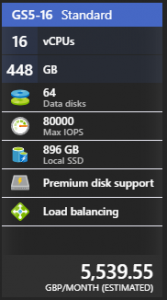Who’s controlling your cloud spend?
The adoption of public cloud computing has now become common place amongst digitally focused organisations both large and small. The ability to pay only for what you consume on a per minute basis means a welcome shift, for most people, away from the traditional CAPEX model to an OPEX monthly billing plan.
This change is allowing companies to utilise funds and distribute them in other areas within their business. The benefit of being able to build highly flexible and scalable infrastructure on demand without the need to purchase expensive hardware, software and licenses is vastly lowering the time to deliver solutions and in most cases lowering costs as well.
The transition to an OPEX model also means processing power and capacity, that until recently was only available to companies with deep pockets, is readily available to smaller companies with pockets that do not reach as deep. Having the bragging rights to being able to access huge teraflops or flip flops or something like that, is no longer reserved for the CTO’s or IT managers of banks or large enterprises. Public cloud, especially Microsoft’s Azure platform, has brought enterprise grade computing to the masses on a biblical scale. Looking at the services, capacity and global reach the Azure platform offers publicly it reminds me of ‘Skynet’ from the Terminator films, the artificial intelligence that wants to destroy the human race. But don’t worry, I doubt that the AI in Azure is planning on global genocide…..let’s hope not eh?
Whilst cloud computing is great because it is flexible, dynamic and scales on demand, it is equally as scary, because it is flexible, dynamic and scales on demand. Users with administrative access to Azure subscriptions have the ability to create services at their leisure, allowing them to build and develop services and applications that previously, would only be available to those with deep pockets. I’m not denying that this is absolutely wonderful and is proving to be a game changer, but there is also the fact that these wonderfully powerful cloud services cost you money!
Of course, the main difference between the upfront CAPEX purchasing model and OPEX is once the purchase has been made, that is it, no more additional cost, licensing aside that is. With the cloud consumption model, you pay nothing up front, however the minute you start to create and build services within Azure the cash registers start ringing, cha-ching!
As all of us who work within technology know, when a developer submits a request to the admin team for the creation of a virtual machine with 4 CPU’s 64GB RAM and 1TB of SSD high IOPs storage, that not actually what they really require. What they really needed was 1 CPU 2GB and 50GB of HDD low IOPs storage. Now this is fine if its hosted on premises in your virtual state, but when it’s in the cloud it significantly changes things.
The resources that are available in Azure for you to consume on-demand in both Infrastructure (IaaS) and Platform (PaaS) services are truly mind boggling. Workloads like Oracle and SAP HANA require massive compute capacity and superfast storage to support the demands of today’s modern businesses. The Microsoft Azure cloud delivers these resources requirements without limits.

Within the Azure portal you can build services simply by clicking on the service you require, complete a few configuration options and select the instance size you want to use, that’s it, once completed you are up and running, simples. One example of this is shown in the image of a GS5 virtual machine instance. This type of server delivers huge power and capacity, but this comes at a price. This means that after approx. eight clicks you could be well on the way to spending the best part of £6000 in your first month with just one virtual machine! The scary thing is that there are larger, more expensive instances than the one shown here.
Businesses need to respect cloud computing from three main perspectives, technical, security and commercial. In order to maintain control and protect against, technical failings, breaches of security and spending the adoption of cloud governance is key.